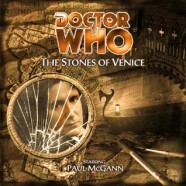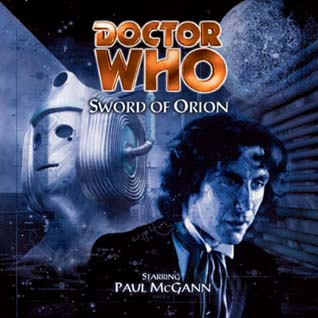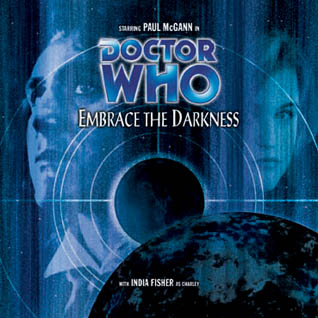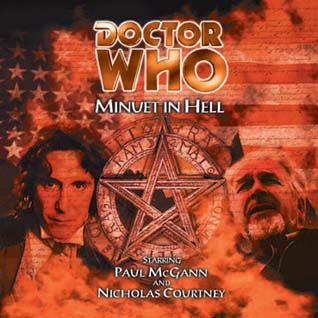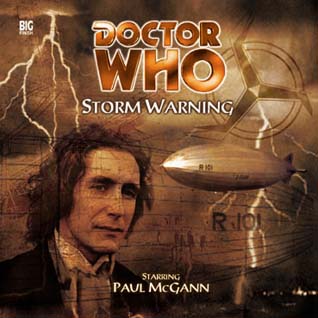Review – Big Finish Doctor Who #18: “The Stones of Venice”
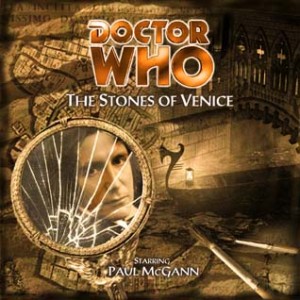 This is the next in line of my Big Finish Productions Doctor Who retro-reviews.
This is the next in line of my Big Finish Productions Doctor Who retro-reviews.
#18 – “’The Stones of Veniceâ€Â
From Big Finish’s site:
The Doctor and Charley decide to take a well-deserved break from the monotony of being chased, shot at and generally suffering anti-social behaviour at the hands of others. And so they end up in Venice, well into Charley’s future, as the great city prepares to sink beneath the water for the last time…
Which would be a momentous, if rather dispiriting, event to witness in itself. However, the machinations of a love-sick aristocrat, a proud art historian and a rabid High Priest of a really quite dodgy cult combine to make Venice’s swansong a night to remember. And then there’s the rebellion by the web-footed amphibious underclass, the mystery of a disappearing corpse and the truth behind a curse going back further than curses usually do. The Doctor and Charley are forced to wonder just what they have got themselves involved with this time…
Written By: Paul Magrs
Directed By: Gary Russell
Cast
Paul McGann (The Doctor); India Fisher (Charley Pollard); Michael Sheard (Count Orsino); Elaine Ives-Cameron (Ms. Lavish); Nick Scovell (Churchwell); Barnaby Edwards (Pietro); Mark Gatiss (Vincenzo)
***minor spoilers ahead***
Whenever a story goes to Venice in a time travel adventure, it’s almost always to see the past. The reason is pretty obvious; Venice largely has no future since it’s sinking into the water. Leave it to Big Finish and Doctor Who to be the ones to tell that one story of Venice’s final night. In traditional Doctor Who fashion, this is one of those stories that begins because the companion needs a vacation. As the story goes, the one who most needs a vacation is the person who just got back from one.
In the 23rd century, the Duke of Venice, Count Orsino, has reigned the last 100 years with the shadow of a curse hanging over it. His lost wife Estella was loved by the people and betrayed, and she cursed the city to a watery doom… because that somehow wasn’t going to happen without the curse. In the time since, a cult has sprung up around her, transforming her into a kind of goddess… because a good end times story needs a cult worshipping some kind of semi-mythical divinity. The Duke is said to have spent the last century looking for her mortal remains in an attempt to lift the curse.  His belief, shared by those in the cult, is that as Estella cursed the city, she could just as easily lift that curse. It’s one of those stories that sounds really good when listening to it, but if you think too hard about it, it falls apart without the explanation that Venice is traditionally a superstitious city, shrouded in mystery, nostaligia, and wonder. Now add in that everyone’s been largely drunk for the past century as the world’s partygoers invade it like it’s the last Mardi Graz, and it pretty much works again if you just go with it. The foundation’s a bit cracked, just like Venice herself.
The fun begins when the Doctor tries to make deals to rescue the artwork – some of which he points out to be completely alien to this world - while Charley gets kidnapped by the gondoliers, drugged, and forced to play the part of the reincarnated Estella. The gondoliers are looking to claim the city when it sinks, and for the final stage of the transition to go unhindered, they need the Duke to stop poking around, looking for the body of his wife. Charley becomes the distraction, until the drugs wear off, allowing her to reassert herself before the big wedding. In a city famous for its art, you’d think there would be a portrait of Estella, but apparently that’s one of her little quirks: she refused to have one commissioned so far as everyone knows. So the only person alive who knows what Estella looks like is the Duke himself, and he’s seemingly eager to give the perception of lifting the curse in the eyes of his people (probably so they don’t riot at the end), that he’s willing to accept Charley as his reincarnated bride.
While the story itself may seem a bit off by description, the characters and concepts are actually a lot of fun, many of them overdramatized to reflect the backdrop of the events themselves. In the midst of this, the Doctor and Charley continue to play off one another, demonstrating just how well their team chemistry really works. It’s worth it for that alone, in my humble opinion, but there really is more to this adventure than that, just as one should expect with Doctor Who. Oddly, it’s a lot like Venice herself in that you feel a tragic majesty here that shouldn’t otherwise come across, and the players provide the goofiness than ensues. Besides, it really gets going when the entire retinue, surrounded by an army of gondoliers ready to strike, decides to go deep into the catacombs to the cult’s lair just before the light of the final dawn breaks to look upon the golden casket of Estella… and what lies within.
Of particular note, made mention near the beginning of the story, Charley is very aware that someday her time in the TARDIS will come to an end, and the Doctor will take her back home.  This will come to bear in future stories, for as we know, Charley is a walking temporal anomaly, and from the Doctor’s point of view, her place is back aboard the R101 as it crashes. With this bit of drama underpinning their otherwise flawless team, it’s that dash of tension that makes listeners eager to find out how it all plays out. It’s important to keep in mind that when these were recorded, there was no 9th Doctor or revival series. Anything could – and does – happen. As the Doctor points out, there are things that have to happen, but it’s not prophecy or fate that puts things into motion; it’s us. We do it to ourselves.  As John Connor would say, “There’s no fate but what we make for ourselves.” So the question becomes, what fate can our heroes make for themselves since Charley’s destiny is already written? The crash of the R101, you see, is a fixed point in time…

